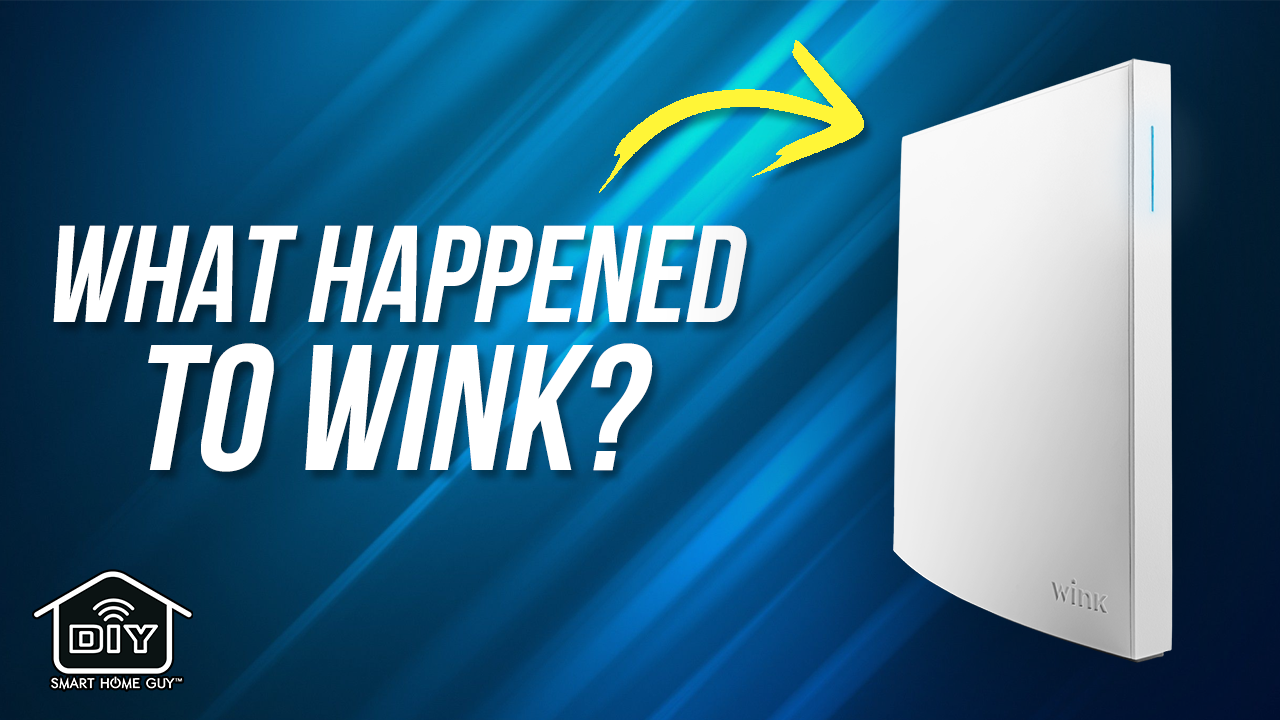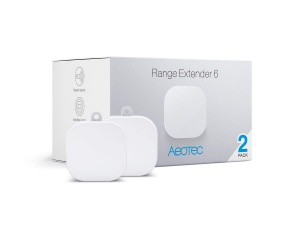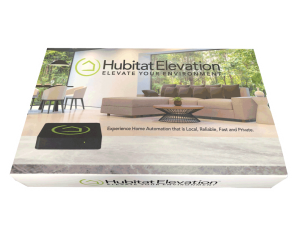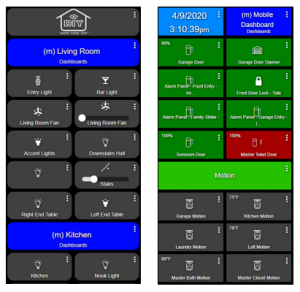Is Hubitat Elevation a Good Wink Hub 2 Alternative?

Update April 2020 – Wink employees have been active again on their Facebook and Twitter pages. I see that people are getting support. Wink also announced a mandatory firmware upgrade, which is encouraging. Unfortunately there’s not much other news available. |
Wink has been silent. Very silent. According to one article, they already have. So if you’re thinking about moving from Wink to Hubitat, here’s a list of important things to keep in mind, including answers to some of the most popular questions.
 |
Hubitat Elevation |
 |
Aeotec Range Extender 6 |
It’s November 2019 and there may be trouble on the horizon for Wink. According to an article posted on The Verge on October 25, 2019, Wink is dying as Will-I-Am’s tech company is low on money. According to sources quoted in the article, employees have simply gone home.
I’ve also noticed that the Wink Hub 2 has not been available on the Wink dot com website for several months. This is creating a Wink exodus. As a former Wink user, I loved it. Simple to use and reliable. I made dozens of videos aimed at making smart home automation more accessible through the Wink Hub.
I made the switch to the Hubitat Elevation back in May of 2019 and have been trying to create videos that would help others that may be thinking of making the jump. I confess that the video library is incomplete, but it is growing at a steady pace.

This video briefly compares important Wink Hub features with Hubitat Elevation features and provides critical tips for making your migration as headache free as possible.
Overall Rating
Hubitat |
Wink |
Comparing Hubitat Elevation to Wink Hub 2 can feel like apples and oranges. They are very different in many ways, even though they essentially do the same thing. When it comes to simplicity, Wink wins hands down. If you’re looking for a simple-to-use entry into the home automation hub, Wink is a great choice (if they ever become available again).
Hubitat Elevation is incredibly powerful and if you don’t mind a bit of a learning curve, it’s a no brainer. Hubitat is highly configurable, which can make it intimidating. There is a requirement that you roll up your sleeves and dig in. There is great community support and a vast array of community developers which make more and more cool stuff available all the time.
If you’re considering moving from Wink to Hubitat, there are some things to keep in mind, which we’ll walk through below. They are also in the video if that helps.
Device Support
Hubitat |
Wink |
This can be very subjective. If one hub supports all your devices and the other doesn’t, you’d feel one hub was superior. The key here is ‘your devices’.
Rather than focus what works with my hub or your hub, I’ll look at this from the approach to devices, since it’s very different between the two hubs.
Wink Supported Devices Approach – Wink tightly controls their device ecosystem. Speaking to a few device manufacturers, manufacturers are required to pay Wink for device handler creation and the devices must be certified with Wink to be included in the install routine. There is an exception to this, which is you can bring in Generic devices and hope they work. My personal experience is this is fairly successful with Zigbee devices, and I have had a low success rate with Z-Wave devices.
Wink does not allow community created device handlers, which is good and bad. Good because it can make the platform more stable, bad because if you have a device that you believe to be critical to your smart home, you’re out of luck.
Hubitat Supported Devices Approach – Hubitat also does testing, but I don’t think (not sure) they charge for the addition of new handlers. My understanding is that they try to enhance their generic drivers to accommodate new devices rather than make specific drivers. This is clearly not always the case when you look at their driver list.
Hubitat encourages community created drivers and allows users to load drivers for devices that Hubitat doesn’t natively support. I can say that I have several of these on my system and they work great. As one might expect, Hubitat does not support community drivers, so they are use them at your own risk.
List of Compatible Devices – Hubitat Documentation
Lutron Caseta Support
Hubitat |
Wink |
One of the great things about the Wink Hub is the native Lutron RA2 radio which means that you have full capabilities with Lutron Caseta devices out of the box.
Hubitat does not have a built in RA2 radio, but you’re not completely out of luck. Hubitat has a Lutron Integrtor app which allows you to purchase a Lutron Smart Bridge Pro (P/N L-BDGPRO2-WH) to link the all together. And since it’s a local connection (not through the cloud) it’s lightening fast. The downside is that the Smart Bridge Pro retails for ~ $100.
Mobile App
Hubitat |
Wink |
This is another area that is difficult to compare due to the opposite approaches taken by each company. So rather than compare them head to head, again we must judge them based on their approach.
Wink Mobile App Approach – Wink made the decision to only support mobile and therefore everything must be done through the mobile app. On the plus side, everything you would ever want to do with Wink can be done with the mobile app. This gets a little bothersome for me (personally) since I’m on my phone all the time and would often times rather sit down at my PC to avoid the shoe-gazing user experience.
Another draw back to the Wink app is that there is no way to create multiple device dashboards. While you can rearrange devices to attempt to organize them, you can’t create pages for the non-power users in the house. All devices are always there (unless you specifically remove permissions for that device from other users).
When it comes to reviewing logs, creating automations, creating groups and shortcuts, it’s all there. You can do anything to your smart home setup from anywhere in the world, 24x7x365.
Hubitat Mobile App Approach – Hubitat has taken a nearly 180 degree stance on the purpose of the mobile app. You can only interact with dashboards and geofencing. As we’ll discuss later, Hubitat dashboards are very powerful so, from this perspective, it’s really more of a positive than a negative. The geofencing is also very cool and allows you to use your phone as a presence detection device.
If you’re looking for logs or home automation rule setup from the mobile app, you’re out of luck. There are work around’s for this, but I wont go into them here. Perhaps one day I’ll make a video.
According to Hubitat, they took this approach on purpose. The idea is that this is a true home automation hub and you should try to minimize the amount of time that you rely on devices like the Amazon Echo, Google Home Assistant, and your smart phone to control your home. If you need control, you can do it from custom dashboards that are optimized for the user experience.
Desktop App
Hubitat |
Wink |
There is no Wink desktop app. So there’s nothing more to say.
On the Hubitat side, the desktop app is all encompassing and has a mobile factored user interface. The only drawback is that you can only access the desktop app (even from the mobile device) while you’re on the same network as your hub. This is a nice security feature. As stated earlier, there are work around’s to let you access your hub while outside your home network, but I wont cover those here.
A negative side of the Hubitat user interface is that it’s not very pretty and can be intimidating. It could really use a more modern graphical look and feel. You do get past this pretty quickly.
Stability & Local Control
Hubitat |
Wink |
If you really want to understand the stability of a hub, join their respective Facebook groups. For Wink (and SmartThings for that matter), you will see weekly questions asking if anyone else is offline or experiencing the flashing blue light. Even though the Wink Hub does provide local control (mostly), it still has dependencies on their cloud servers.
Hubitat is fully local. Other than the cloud served dashboards that is. If the Hubitat cloud goes down, you will still have access to all of your automations from your home, everything will still function, your dashboards are still available inside your network. If you’re trying to access the dashboards while outside your home, no-go (except for the work around I keep refusing to talk about).
Both Wink and Hubitat do not force hub updates. However Wink does not provide the capability to do hub backups, which Hubitat does. If you perform an update and things fall apart, you can always roll back to a previous backup. If you replace hubs, all is not lost, you can import a backup and be up and running again.
I gave Hubitat a minor hit on stability due to the community drivers aspect. It is not uncommon for a Hubitat user to install community drivers for unsupported devices and create havoc on their network. Such is the price of an open platform.
Automation Capability
Hubitat |
Wink |
This is really where the two hubs begin to diverge. Wink has, in it’s own right, a decent rules engine called Robots. It does a fine job for entry level home automation. And you can extend the reach through Alexa, Google Home, and IFTTT. But when it comes to setting up complex automations, creating virtual devices, using variable states, and so on, it falls flat.
Hubitat, on the other hand, has levels of automation tools that provide capabilities for simple to complex automations. Before you ever get to the big daddy of Hubitat (Rule Machine), entry level users can start with the Hubitat Simple Automation app, Hubitat Motion Lighting app, Hubitat Mode Manager, Motion Lighting Apps, and Button Controller. These are in their own right far more powerful than Wink Robots. If those aren’t enough to pull off the impossible, Hubitat Rule Machine will get you across the line.
Admittedly with great power comes more complexity. It’s a standard trade. However Hubitat has a vibrant community that will help you as you go along.
Extensibility
Hubitat |
Wink |
Wink is not without any extensibility, but it is very limited. As mentioned, you can connect to Alexa, Google Home and IFTTT. There’s also a Wink API for the truly brave. Back in the day there was an app called Stringify that would integrate with Wink. That is where I laid out my most powerful automations. Sadly, Stringify sold to Xfinity and was soon after shut down. This was what prompted my move to Hubitat.
Hubitat, being an open platform, integrates with nearly everything. Okay, that’s a bit of a stretch. But it really is quite extensible. There is also the capability to add community apps, which is brilliant. SmartThings has a similar feature, but SmartThings custom apps and drivers run in the cloud, not local. With Hubitat, it all runs local.
The fact that Hubitat apps run local does mean that you may need to be careful with how much junk you go throwing onto our hub. But again, that’s a price you pay for flexibility and local control.
Dashboards
Hubitat |
Wink |
As mentioned at the top of the article, dashboards are really the core of how you would interact with Hubitat on a day-to-day basis. They are all custom made by the user and have a wide array of formatting options.
The image below shows two different dashboards that we use on our phones. The image on the left is a main dashboard, and the image on the right is a room dashboard. Clicking on the blue header on the left dashboard loads the right dashboard.

On the Wink side, other than the ability to reorder/rearrange things, the dashboards a all within the Wink app paradigm. While this does provide a great deal of uniformity, it really doesn’t allow a user to hide devices or curate a navigation flow on their own.
Other Apps
Hubitat |
Wink |
Other than integrations, Wink doesn’t provide any additional application features. It wouldn’t be fair if I didn’t mention that some of the capabilities that exist as apps in Hubitat are native to the Wink app.
As for Hubitat, here is the current list of add-on applications that are built in.
- Chromecast Integration (beta)
- Ecobee Integration
- Hub Link (links two or more hubs together)
- Hubitat Safety Monitor
- Hue Bridge Integration
- IFTTT Integration
- Life360 Integration
- Lock Code Manager (very powerful – more capabilities than Wink lock manager)
- Lutron Integrator
- Maker API (allows connections to external endpoints)
- Mode Manager
- Ranchio Integration
- SharpTools (alternate dashboard engine)
- Sonos Integration
- Thermostat Scheduler
- Yeelight Integration
- Zone Motion Controllers
There are also community apps which further extent the capability of Hubitat. Even if Hubitat themselves didn’t think of it, there’s a good chance that the community did.
END